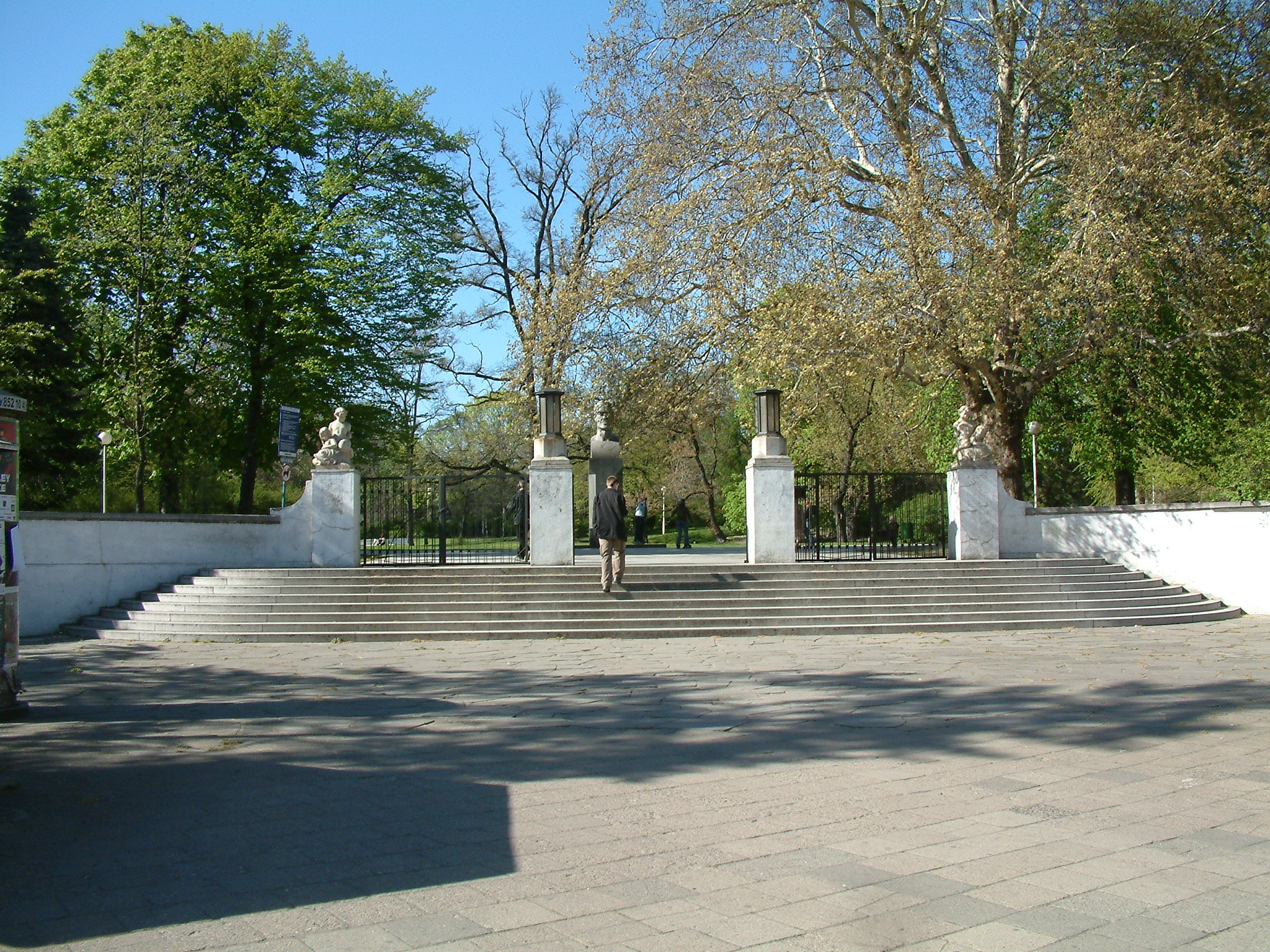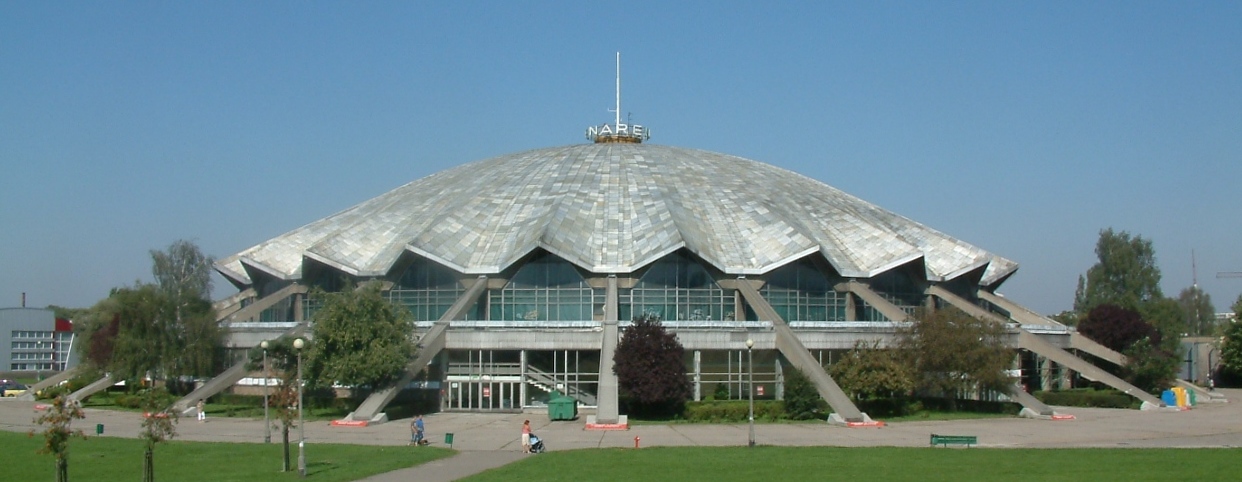Grunwald, Poznań on:
[Wikipedia]
[Google]
[Amazon]
Grunwald is a part of the city of
 At the north-east corner of Grunwald is the
At the north-east corner of Grunwald is the  The areas in the heart of Grunwald, east of Łazarz, formerly contained extensive military barracks, originally built under German rule in the late 19th century to house the troops building and manning the city's defensive forts (see
The areas in the heart of Grunwald, east of Łazarz, formerly contained extensive military barracks, originally built under German rule in the late 19th century to house the troops building and manning the city's defensive forts (see
{{DEFAULTSORT:Grunwald, Poznan Districts of Poznań
Poznań
Poznań () is a city on the River Warta in west-central Poland, within the Greater Poland region. The city is an important cultural and business centre, and one of Poland's most populous regions with many regional customs such as Saint Joh ...
in western Poland
Poland, officially the Republic of Poland, is a country in Central Europe. It is divided into 16 administrative provinces called voivodeships, covering an area of . Poland has a population of over 38 million and is the fifth-most populou ...
. It was one of the five governmental districts ''(dzielnica
In the Polish system of local administration, a dzielnica (Polish plural ''dzielnice'') is an administrative subdivision or quarter of a city or town. A dzielnica may have its own elected council ('' rada dzielnicy'', or ''dzielnica council''), ...
)'' into which the city was divided prior to 1990, and which are retained for certain administrative purposes (see Administrative division of Poznań Since 2011, the Polish city of Poznań has been divided into 42 ''osiedles'' or neighbourhoods, each of which has its own elected council with certain decision-making and spending powers. The first uniform elections for these councils were held on 2 ...
).
The name "Grunwald" comes from the name of the street ''ulica Grunwaldzka'', which had been so named in 1919 in commemoration of the Battle of Grunwald
The Battle of Grunwald, Battle of Žalgiris or First Battle of Tannenberg was fought on 15 July 1410 during the Polish–Lithuanian–Teutonic War. The alliance of the Crown of the Kingdom of Poland and the Grand Duchy of Lithuania, led respec ...
. A neighbourhood located in the vicinity of that street came to be known as Grunwald, and that name was transferred to the entire ''dzielnica'', covering the south-western parts of the city, on its creation in 1954. The name continues to be popularly used to refer specifically to the original neighbourhood, as reflected in the names of three of the ''osiedle
Osiedle (Polish plural: ''osiedla'', from German ''Ansiedlung'' meaning ''settlement'') is a term used in Poland to denote a designated subdivision or neighbourhood of a city or its dzielnica, or of a town, with its own council and executive. Li ...
s'' into which Poznań is now divided: ''Stary Grunwald'' ("Old Grunwald"), ''Grunwald Północ'' ("Grunwald North") and ''Grunwald Południe'' ("Grunwald South"). For other ''osiedles'' contained within the wider district, see Administrative division of Poznań Since 2011, the Polish city of Poznań has been divided into 42 ''osiedles'' or neighbourhoods, each of which has its own elected council with certain decision-making and spending powers. The first uniform elections for these councils were held on 2 ...
.
Grunwald has an area of , which is 13.8% of the total area of Poznań. Its population of 125,500 accounts for 21.9% of the city's total. The population density is 3,467 persons/km².
Grunwald is bounded by the districts of Wilda and Stare Miasto to the east, and Jeżyce to the north. It is also bordered by the town of Luboń
Luboń (german: Luban) is a town in Poland, situated on the Warta River, in the Poznań metropolitan area, in the Poznań County in the Greater Poland Voivodeship. It has 29,301 inhabitants (2010). The town was created in 1954 by the merger of 3 ...
to the south, and the administrative districts ''( gminas)'' of Dopiewo
Dopiewo is a village in Poznań County, Greater Poland Voivodeship, in west-central Poland. It is the seat of the gmina (administrative district) called Gmina Dopiewo. It lies approximately west of the regional capital Poznań.
History
During ...
to the west and Komorniki to the south-west.
Geography
The boundary between Grunwald and Jeżyce is marked by the street ''ulica Bukowska'', which runs from the city centre to Poznań Ławica Airport (and onwards towards Buk). Grunwald's eastern boundary largely coincides with the railway line running south and then west from Poznań's main station ''(Poznań Główny)''.Poznań International Fair
The Poznań International Fair (PIF, pl, Międzynarodowe Targi Poznańskie, MTP) is the biggest industrial fair in Poland. It is held on the Poznań fairground in Poland. Poznań International Fair is located in the centre of the city opposite ...
s site. South of this is the western entrance to Poznań Główny station, and then an industrial area adjacent to the railway. Leading south-west from the station is the main street ''ulica Głogowska'', which runs past ''Park Wilsona'' – a park named for U.S. President Woodrow Wilson
Thomas Woodrow Wilson (December 28, 1856February 3, 1924) was an American politician and academic who served as the 28th president of the United States from 1913 to 1921. A member of the Democratic Party, Wilson served as the president of ...
, containing a band shell and Poznań's Palm House ''(Palmiarnia)''. Głogowska then passes through the old district of Łazarz (with its open-air market, ''Rynek Łazarski''), crosses the western branch of the railway at Górczyn, meets the A2 motorway at the Komorniki junction at the southern edge of the city, and continues towards Wrocław
Wrocław (; german: Breslau, or . ; Silesian German: ''Brassel'') is a city in southwestern Poland and the largest city in the historical region of Silesia. It lies on the banks of the River Oder in the Silesian Lowlands of Central Europe, rou ...
. Another main radial
Radial is a geometric term of location which may refer to:
Mathematics and Direction
* Vector (geometric), a line
* Radius, adjective form of
* Radial distance, a directional coordinate in a polar coordinate system
* Radial set
* A bearing f ...
route is ''ulica Grunwaldzka'', which passes through Grunwald's main residential areas, including Ostroróg in the north of the district, the modern ''osiedle Kopernika'' ("Copernicus
Nicolaus Copernicus (; pl, Mikołaj Kopernik; gml, Niklas Koppernigk, german: Nikolaus Kopernikus; 19 February 1473 – 24 May 1543) was a Renaissance polymath, active as a mathematician, astronomer, and Catholic canon, who formulated ...
estate"), and Junikowo and Plewiska in the south-west. Junikowo is the site of one of Poznań's two main cemeteries (the other being at Miłostowo in Nowe Miasto). Close to Grunwaldzka's junction with ''ulica Bułgarska'' is the city's main football stadium ( Stadion Miejski), home ground of Lech Poznań and a Euro 2012
The 2012 UEFA European Football Championship, commonly referred to as UEFA Euro 2012 or simply Euro 2012, was the 14th European Championship for men's national football teams organised by UEFA. The final tournament, held between 8 June and 1 ...
group C venue.
North of Junikowo is an extensive green area, including the Marcelin Woods ''(Lasek Marceliński)''. North of this are the neighbourhoods of Marcelin, Pogodno, Edwardowo, Wydmy and Ławica (which gives its name to Poznań Ławica Airport, situated just to the north in Jeżyce district).
Other neighbourhoods within Grunwald include Skórzewo to the north-west of Junikowo cemetery (adjoining a village outside the city boundary also called Skórzewo), Raszyn between Górczyn and Osiedle Kopernika, Zatorze to the east of Górczyn, and the mainly industrial Rudnicze and Kopanina south of Junikowo. Beginning between Rudnicze and Kopanina and running south is a series of small lakes, and the Junikowo Stream ''(Strumień Junikowski)'' also flows through this region, eventually reaching the Warta
The river Warta ( , ; german: Warthe ; la, Varta) rises in central Poland and meanders greatly north-west to flow into the Oder, against the German border. About long, it is Poland's second-longest river within its borders after the Vistula, a ...
river in Luboń
Luboń (german: Luban) is a town in Poland, situated on the Warta River, in the Poznań metropolitan area, in the Poznań County in the Greater Poland Voivodeship. It has 29,301 inhabitants (2010). The town was created in 1954 by the merger of 3 ...
.
In the extreme south-west of Grunwald are the neighbourhoods of Fabianowo and Kotowo, and an Auchan retail park close to the A2 junction.
Poznań Fortress
Poznań Fortress, known in German as Festung Posen (Polish: ''Twierdza Poznań'') was a set of fortifications in the city of Poznań (German: ''Posen'') in western Poland, built under Prussian rule in the 19th and early 20th centuries. It represe ...
). These areas are now mainly residential. Also in this area is Jan Kasprowicz
Jan Kasprowicz (12 December 1860 – 1 August 1926) was a poet, playwright, critic and translator; a foremost representative of Young Poland.
Biography
Kasprowicz was born in the village of Szymborze (now part of Inowrocław) within the Provin ...
Park, which contains the Arena
An arena is a large enclosed platform, often circular or oval-shaped, designed to showcase theatre, musical performances, or sporting events. It is composed of a large open space surrounded on most or all sides by tiered seating for spectators ...
indoor sports and concert venue, as well as other sports grounds.
The branch of the railway running west towards Berlin
Berlin ( , ) is the capital and List of cities in Germany by population, largest city of Germany by both area and population. Its 3.7 million inhabitants make it the European Union's List of cities in the European Union by population within ci ...
passes through southern Grunwald, where the stations Poznań Górczyn and Poznań Junikowo are situated. Górczyn and Junikowo are also termini for tram
A tram (called a streetcar or trolley in North America) is a rail vehicle that travels on tramway tracks on public urban streets; some include segments on segregated right-of-way. The tramlines or networks operated as public transport are ...
s running along Głogowska and Grunwaldzka to the city centre; Górczyn is also a bus terminus.
History
Of the neighbourhoods in today's Grunwald district, the first to be brought within the city of Poznań were Łazarz and Górczyn, in the expansion of the city boundaries which took place in 1900 (when Poznań was part of the German Empire). Most of the remainder of the district was incorporated into the city in 1940–1942, during theNazi occupation
German-occupied Europe refers to the sovereign countries of Europe which were wholly or partly occupied and civil-occupied (including puppet governments) by the military forces and the government of Nazi Germany at various times between 1939 ...
. At this time the neighbourhoods were given German names, including ''Hermannstadt'' for Łazarz, ''Lenzingen'' for Junikowo and ''Steineck'' for Ławica.
The neighbourhood of Plewiska was brought within the city boundaries in 1987 (with part remaining outside the city as a separate village).
One historic building is the Evangelical-Augsburg Chapel, Poznań.
References
{{DEFAULTSORT:Grunwald, Poznan Districts of Poznań